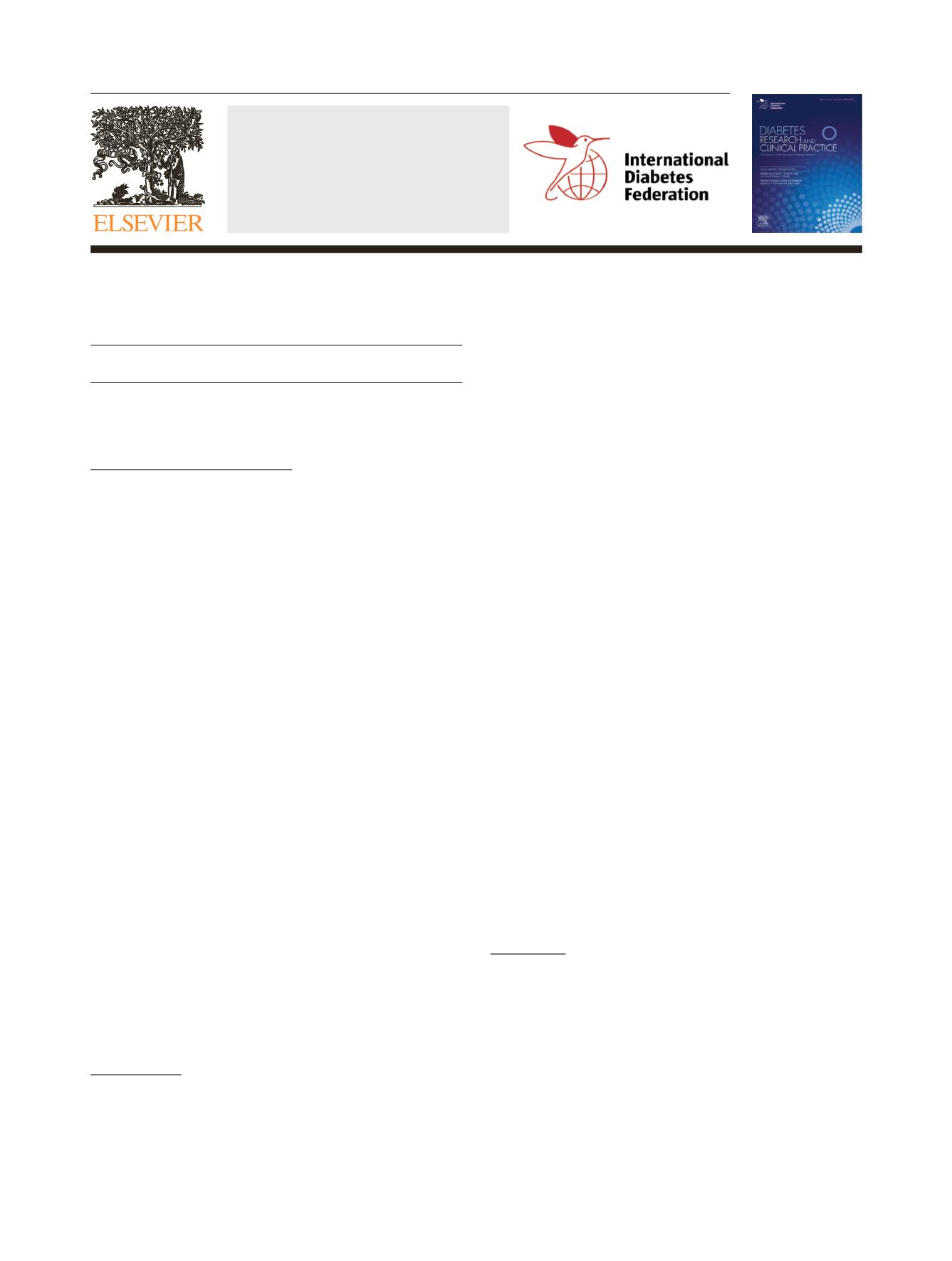

Oral Presentations
Epidemiology and Prevention of Diabetes
OL01-2
Characteristics of abnormal oral glucose tolerance test in GDM
diagnosis
Dittakarn BORIBOONHIRUNSARN
1
*.
1
Faculty of Medicine Siriraj
Hospital, Mahidol University, Thailand
Objectives:
To describe characteristics of abnormal OGTT
values in GDM diagnosis and their clinical correlation. In
addition, the effects of omitting any OGTT value on GDM
diagnosis were evaluated.
Methods:
A total of 415 women diagnosed with GDM were
included. GDM screening and diagnosis results were extracted
from medical records. Detailed analysis of OGTT values at the
time of GDMdiagnosis was performed, including prevalence of
abnormalities of each value, number of abnormal values. In
addition, relationship between abnormal OGTT values and
maternal characteristics and clinical characteristics were also
evaluated.
Results:
Mean age was 32.9 years, 46% were nulliparous, and
39% were overweight. Mean gestational age at diagnosis was
19.2 weeks and 42.4% were diagnosed during 24
–
28 weeks.
Insulin therapy was indicated in 12% of cases. Most common
abnormalities were found in the 2nd and 3rd values (85.3%
and 96.6% respectively). In terms of number of abnormal
OGTT values, abnormal 2 values was found in 42.9% while
abnormal 3 or 4 values were found in 34.2% and 22.9%,
respectively. Detailed analysis revealed that 16.7% of GDM
would be missed if the 4th OGTT was omitted, including 2
cases who required insulin therapy. Number of abnormal
OGTT values were significantly higher among overweight
women (p = 0.02) and those who required insulin therapy
(p < 0.001), but not related to timing of diagnosis. Mean birth
weight and rate of macrosomia were also comparable between
different numbers of abnormal OGTT values.
Conclusion:
Among GDM women, 57.1% had abnormal 3 or 4
OGTT values. Number of abnormal OGTT values were posi-
tively related to overweight and insulin requirement. Omitting
the 4th OGTT value would result in unacceptable 16.7%
undiagnosed GDM.
OL01-3
Increased risk for diabetes development in subjects with large
variation in total cholesterol levels in Koreans
Eun-Jung RHEE
1
*, Kyungdo HAN
2
, Seung-Hyun KO
3
,
Kyung Soo KO
4
, Ki-Up LEE
5
, Won-Young LEE
1
.
1
Department of
Endocrinology and Metabolism, Kangbuk Samsung Hospital,
Sungkyunkwan University School of Medicine,
2
Department of
Medical Statistics, College of Medicine, The Catholic University of
Korea,
3
Divisin of Endocrinology and Metabolism, Department of
Internal Medicine, St. Vincent
’
s Hospital, College of Medicine, The
Catholic University of Korea,
4
Department of Internal Medicine,
Cardiovascular and Metabolic Disease Center, Inje University
Sanggye Paik Hospital, Inje University College of Medicine,
5
Department of Internal Medicine, Asan Medical Center, University of
Ulsan College of Medicine, Korea
Background:
Recent studies suggest the role of hyperlipidemia
on development of diabetes. However, statins are reported to
increase the risk for diabetes development. We analyzed the
relationship between the variations of total cholesterol (TC)
levels and the risk of type 2 diabetes in data from a Korean
nationwide population-based study.
Methods:
In 2,827,950 Korea examinees in general health
check-up database (DB) as a sub-dataset of Korean National
Health Insurance Service (NHIS), in whom at least two health
check-up data were available between 2002 and 2006, and did
not have diabetes at baseline, the variations of TC between the
examinations were calculated. The examinees were divided
into 10 groups according to deciles of TC variation and the
hazard ratio for diabetes development from 2007 to 2013 were
analyzed.
Results:
During the follow-up period, 3.4% of the examinees
developed diabetes. The subjects with the highest decile of TC
variation (32.5%) showed the highest incidence rate for
diabetes among the decile groups of TC variation (5.24%), and
the incidence rate for diabetes showed J-shaped curve with
fourth decile group showed the lowest incidence rate for
diabetes. The highest decile group of TC variation showed
increased hazard ratio for diabetes development after adjust-
ment for confounding variables (1.16; 95% CI 1.14
–
1.18). These
results were similarly observed in either group with or without
hyperlipidemic medication.
Conclusions:
The subjects with large variation of TC showed
increased risk for diabetes development, independent to the
medicationof hyperlipidemic agents. These results suggest the
possibilityof contribution of variation inTC level, not themedi-
cation itself that affects the risk for diabetes development.
OL01-4
Central blood pressure and insulin sensitivity after an oral
glucose loading
Ang-Tse LEE
1
, Chia-Lin LEE
1,2,4
, I-Te LEE
1,7
, Jun-Sing WANG
1,8
,
Chen-Chi WANG
3
, Shih-An LIU
3
, Wen-Jane LEE
4
,
Shih-Yi LIN
1,5,7
, Chen-Huan CHEN
6,7,9
, Wayne H-H SHEU
1,7,10
*.
1
Division of Endocrinology and Metabolism, Department of Internal
Medicine, Taichung Veterans General Hospital,
2
Department of Public
Health, College of Public Health, China Medical University,
3
Department of Otolaryngology, Taichung Veterans General Hospital,
4
Department of Medical Research, Taichung Veterans General
Hospital,
5
Center for Geriatrics and Gerontology, Taichung Veterans
General Hospital, Taichung,
6
Department of Medicine, Taipei
Veterans General Hospital,
7
School of Medicine, National Yang-Ming
University,
8
Institute of Clinical Medicine, School of Medicine,
National Yang-Ming University,
9
Institute of Public Health, National
Yang-Ming University,
10
College of Medicine, National Defense
Medical Center, Taipei, Taiwan
Background:
Although peripheral blood pressure (BP) is
generally used to guide therapeutic decisions, recent
D IABETES R ESEARCH AND C LINICAL P RACTICE 120S1 (2016) S40 – S64Contents available at
ScienceDirect
Diabetes Research
and Clinical Practice
journal homepage:
www.elsevier.com/locate/diabres0168-8227© 2016 Elsevier Ireland Ltd. All rights reserved.


















